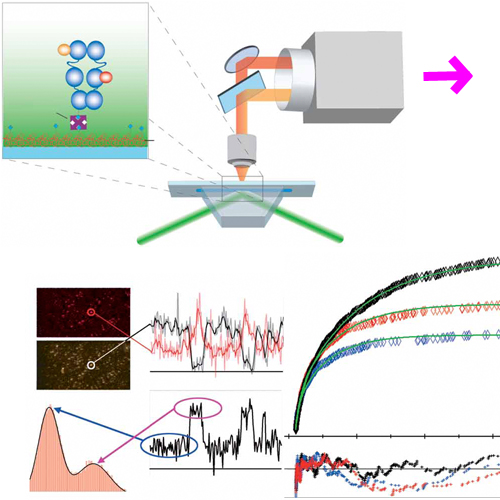The large conformational changes of Hsp90 are only weakly coupled to ATP hydrolysis
01-Mar-2009
Nature Structual & Molecular Biology, 2009, 16, 281 - 86 published on 01.03.2009
www.nature.com, online article
www.nature.com, online article
The molecular chaperone heat-shock protein 90 (Hsp90) is one of the most abundant proteins in unstressed eukaryotic cells. Its function is dependent on an exceptionally slow ATPase reaction that involves large conformational changes. To observe these conformational changes and to understand their interplay with the ATPase function, we developed a single-molecule assay that allows examination of yeast Hsp90 dimers in real time under various nucleotide conditions. We detected conformational fluctuations between open and closed states on timescales much faster than the rate of ATP hydrolysis. The compiled distributions of dwell times allow us to assign all rate constants to a minimal kinetic model for the conformational changes of Hsp90 and to delineate the influence of ATP hydrolysis. Unexpectedly, in this model ATP lowers two energy barriers almost symmetrically, such that little directionality is introduced. Instead, stochastic, thermal fluctuations of Hsp90 are the dominating processes.











